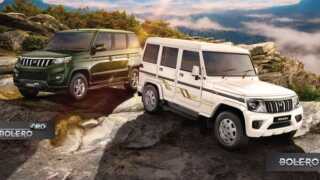Follow us today…
Some posts in car owner groups just stop you mid-scroll. You know the type. They’re not dramatic or over-the-top, but they deliver such a specific, real-life scenario that you can’t help but imagine yourself in the driver’s seat, living that moment. That’s exactly what happened today when I came across a short, seemingly unassuming post by a member named Chesco Zuasola in the 2025+ Toyota Sienna Facebook group. What he said was simple. But what it meant might completely reshape the way you think about minivan practicality.
“My 2025 Toyota Sienna 8-seater has luggage space for 10 large pieces of luggage and 1 wheelchair, so you have an idea,” wrote Chesco, probably not realizing that he was about to start a chain reaction of comparisons, debates, and helpful advice from fellow owners.
Let’s pause here. Ten large bags and a wheelchair? That’s not a casual run to Costco. That’s full-blown airport shuttle territory. And what made the post even more unexpected was the follow-up. When someone in the group, Lexis Munar, asked, “Is this with all seats up though?”, Chesco clarified, “Nope. The third row seats are folded.” Suddenly, the picture got clearer. He wasn’t just squeezing bags in cracks and spaces, he was taking full advantage of the Sienna’s fold-flat rear row to create a cargo hauler out of a family van.
If you’ve ever wondered how much cargo the 2025 Sienna can really carry, beyond what Toyota officially states, this kind of real-world insight hits home. It’s the sort of detail you don’t get from showroom specs, but from someone who lives with the van every day. It’s also a useful reminder that the rear cargo well combined with folded seats creates a surprisingly pleasant and spacious storage zone, perfect for real families on real trips, not just sanitized brochure imagery.
Digital Mirrors, Fragile Glass, and a Dash of Caution
While Chesco’s post got applause from several members, there were some practical warnings mixed in too. Lan Vuong Duke chimed in with a quiet but clever reminder: “Good job! This is when a digital rear mirror comes in handy.” He’s right. When you’re stacking luggage past the headrests, traditional rear visibility becomes a thing of the past. Digital mirrors, which show a camera feed from the back of the car, allow you to keep full awareness of traffic behind, even when your cargo area looks like a Tetris game gone right.
But not all surprises are good ones. “Sweet, but watch out and don’t let anything hard hit the window of your 2025 Sienna. The glass there is very expensive,” warned Terence To. And he’s not exaggerating. Modern minivan glass panels, especially rear side windows with integrated sunshades and embedded antennas, aren’t cheap. It’s one of those costs that doesn’t show up in a monthly payment, but comes out of nowhere when something goes wrong. So while the Sienna gives you room for big hauls, it’s worth being strategic with soft items against the glass and using cargo nets or organizers where possible.
This is where the concept of modular travel gear makes its case. A well-designed trunk organizer or collapsible luggage system is no longer just a “nice to have.” It becomes part of how you respect your vehicle and protect your investment. The better you pack, the longer your Sienna will serve your needs without hidden costs.
A Real-Life Road Trip Testimony
Then came the post that really added weight to Chesco’s observation. Kate Kelly wrote, “We went on a waitlist for one of these 2025 Toyota Sienna vans after renting one in Toronto. It comfortably hauled 4 adults, 2 kids, all the luggage for a week, 2 car seats and a double stroller. Anyone who thinks there isn’t enough storage room should probably just get a truck!”
That’s one of those replies that sticks. Not just because it confirms the luggage capacity, but because it challenges a narrative that’s still floating around: that minivans are tight on storage when fully loaded with people. According to this Torque News feature on why the Sienna ranks higher than the Highlander as a family car, there’s strong evidence that the Sienna isn’t just a people mover. It’s a full-function, everything-hauler that punches above its class when used smartly.
A Word on Trade-Offs
Now, before anyone rushes out thinking the Sienna is a moving truck in disguise, Lucas Meireles added an important note. He wrote, “Toyota Sienna has a little bit less space for luggage than my Pacifica had. Also, the stow and go at 3rd row needs modification on its base. Tailgate door is thick, reducing space and how you can put luggage when all seats are available. Overall, great car.” And he’s not wrong.
It’s true that compared to a Chrysler Pacifica, the Sienna does trade off some cargo flexibility because of its hybrid battery location and fixed second-row seats. And while the Toyota Sienna Hybrid is absolutely worth it, as discussed in a deeper look at hybrid cost benefits on Torque News, it still has limits if you’re comparing it directly with full stow-and-go systems that fold flush to the floor. But that’s the trade-off you make when you prioritize fuel efficiency and AWD capability, both of which come standard on most Sienna trims now.
Think Bigger Than Cubic Feet
What this conversation highlights is that cargo space isn’t just about cubic feet listed on a spec sheet. It’s about how that space works with your actual life. Can it handle a wheelchair? A stroller and car seats? A week’s worth of gear for a big family vacation? According to these real-world users, yes, it can, and it does, often better than expected.
And if you still think the Sienna isn’t cut out for long-distance family travel, you might want to look at how it performed on a cross-country road trip, as shared in this detailed Sienna family travel review.
Why the Third Row Matters More Than You Think
If you’re comparing vans, here’s one thing that often flies under the radar until it’s too late: how easy is it to configure your cargo space without removing seats?
Advertising
In the 2025 Toyota Sienna, the third-row seats fold flat into a recessed floor, which is exactly what Chesco Zuasola did to fit those ten large bags and a wheelchair. That’s standard fare for minivans, but the Sienna does it better than most because you don’t have to remove anything or fight with awkward headrests. However, what some buyers don’t realize until delivery day is that the second-row captain’s chairs or bench seats are not removable. That’s Toyota’s compromise for comfort and safety.
If you plan to regularly haul building supplies, bikes, or need a completely flat load floor for work purposes, you may feel limited. But for families prioritizing people-hauling and weekend travel, the fixed second row becomes a non-issue quickly. That said, if you’re considering a Sienna and cargo flexibility is high on your list, test-drive it with the seats folded and gear on hand. The layout might surprise you in a good way, just like it did for Kate Kelly after her rental experience in Toronto.
For a more detailed look at what Toyota changed and why, see how evolutionary hybrid design changes have reshaped the Sienna’s interior layout in this breakdown of hybrid-era tradeoffs.
Gear That Makes a Sienna Even Smarter
Let’s face it. No matter how clever the factory layout, real life throws chaos into every cargo plan. That’s where a few small upgrades can make a big difference. And we’re not talking about flashy aftermarket accessories. We’re talking smart gear that enhances how you use your Sienna’s existing space.
Here are three categories that do more than look nice:
- Collapsible Storage Cubes: These stack neatly when full and collapse flat when empty. Perfect for groceries, sports gear, or separating delicate items like laptops and glass bottles from heavy luggage.
- Seatback Organizers with Built-in Coolers: Ideal for road trips with kids. They keep snacks cold, iPads secured, and trash out of cupholders. Many fit snugly behind the front seats without blocking rear legroom.
- Wheelchair and Stroller Ramps (Portable): If you’re regularly hauling mobility equipment, a portable telescoping ramp can be stored inside the rear well and deployed as needed, minimizing strain and making the rear space even more accessible.
These aren’t just “mom van” gimmicks. They’re part of a growing trend toward adaptive utility, where vehicles become more tailored to personal lifestyles without major modification. And if you’re still wondering whether a hybrid van can keep up with the demands of a gear-heavy lifestyle, this in-depth Sienna AWD review might offer clarity on how well it performs under load.
Why Minivan Stigma is Still Holding Families Back
Here’s where we press pause and ask an uncomfortable question: Why are so many people still hesitant to buy a minivan, even when it fits their needs perfectly?
The answer has nothing to do with logic, and everything to do with perception. Vans get unfairly labeled as boring, unadventurous, or only for soccer practice duty. And yet, these are the same vehicles carrying full-size families on multi-state trips, moving furniture, supporting aging parents, or even sleeping in during camping getaways. They offer lower floors, better entry for seniors, and more interior flexibility than many SUVs with higher price tags.
There’s a subtle but real ethical implication here. When car buyers chase aesthetics or status symbols, they may overlook more practical, responsible, and inclusive choices. A van like the Sienna supports multiple generations in one trip, makes long drives easier on caretakers, and saves families thousands in fuel thanks to its hybrid efficiency. Maybe the real power move is admitting that comfort, flexibility, and quiet practicality are worth more than SUV badges and off-road fantasies you’ll rarely use.
If you’re still torn between an SUV and a van, read how real-world Sienna owners stack the 8-seater against Toyota’s Highlander and why they chose more room over image in this article on family-first priorities.
A Quick Word on Priorities
There’s a deeper moral buried in this luggage-stuffing story. When families shop for vehicles, the conversation often tilts toward aesthetics, engine specs, or resale value. But these comments remind us that space is about dignity. It’s about giving your aging parents enough room for their wheelchair without needing to sacrifice your kid’s suitcase. It’s about choosing a vehicle that supports your lifestyle, not the other way around. Sometimes the right choice isn’t about what you want to be seen driving. It’s about what quietly and reliably supports the people you love.
So yes, the 2025 Toyota Sienna 8-seater might not be the flashiest car in the parking lot. But if it can haul ten bags and a wheelchair without breaking a sweat, maybe it’s time to rethink what “family car” really means.
Want to dive deeper into how the Sienna holds up in real-world ownership? You may want to see how Sienna owners are reporting surprising real-world MPG numbers in this revealing article. Spoiler alert: It might change how you budget your next road trip.
Now, Let’s Talk
What’s the most unexpected thing you’ve been able to fit in your Toyota Sienna? Do you think automakers today are prioritizing the right kind of practicality in family vehicles?
Let us know in the comments below, and tell us how your Sienna (or any other van or SUV) is working out for your real-world cargo needs.
Armen Hareyan is the founder and Editor-in-Chief of Torque News. He founded TorqueNews.com in 2010, which since then has been publishing expert news and analysis about the automotive industry. He can be reached at Torque News Twitter, Facebook, Linkedin, and Youtube. He has more than a decade of expertise in the automotive industry with a special interest in Tesla and electric vehicles.
Image source: Chesco Zuasola and Grok.
Follow us today…
Source: torquenews.com










